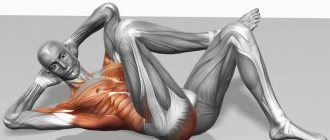January 26, 2021
A long-time smoker can smoke 40-45 cigarettes a day. Of course, such an amount of nicotine and tar entering the body every day cannot but affect health. However, it is extremely difficult to say goodbye to a negative habit. Firstly, cigarettes become part of all daily rituals. They fit into life so “organically” that they are associated with rest, relaxation, respite, and also “help” in moments of nervous tension. Secondly, the body itself begins to consider the incoming substances as something important, and includes nicotine in metabolic processes. That’s why it’s so difficult to get rid of a bad habit, because you need to convince yourself, but the body will “demand.”
It is not surprising that many long-term smokers try to follow the “gradual withdrawal” method, simply reducing the number of cigarettes they smoke daily. In practice, this method does not allow you to completely quit smoking. The harm can be reduced, but only slightly. You can get rid of potential or existing health problems only after completely quitting smoking.
However, many are afraid to suddenly quit smoking. Although a smoker with 20 years of experience may still be a very young man, 35-40 years old, and his body will be able to fully recover even after such “pollution.” However, many people are interested in what happens if you quit smoking abruptly? Smokers are afraid of mood swings, arrhythmias and heart rhythm disturbances, excess weight gain, and so on. Let's figure out whether it is really dangerous to suddenly quit smoking and whether the human body can react negatively to quitting cigarettes?
How can a woman quit smoking?
No matter how strange it may sound, women are better at quitting smoking through willpower, without substitutes and tricks with drug support. Of course, you can’t do without stress; there will be difficult days when a cigarette seems to be the only way to cope with the stress on the psyche. However, as practice shows, women punish themselves less for breakdowns and quickly return to life without cigarettes.
A woman’s behavior is greatly influenced by the atmosphere of the family and home: if there are some family reasons (for example, a chronically ill child or adult), then women succumb to them more easily and quit smoking.
Psychotherapeutic methods, especially NLP books based on the Allen Carr method, have shown good effectiveness with female audiences. Throwing for company, with girlfriends or to spite a rival are also very feminine options.
Change of environment and company
Being purposeful and persistent in your desire to get rid of a bad habit is sometimes not easy. What about traditional smoking breaks at work or between couples? After all, all friends and colleagues go for a smoke after a movie or dinner. Former smokers claim that a change in situation and environment helped them. We are not talking about a complete change in social circle or work. Just, at least for the first time, avoid going to cafes or other places after work where many people smoke. Stay home and read a book or watch a movie instead of going to a club. When people around you go to the smoking room for a smoke break, take an apple and just go outside.
Talk to your smoking friends. Try to convince them to support your initiative. If you refuse, ask in your presence not to bring up the topic of smoking in communication, to respect your choice and under no circumstances to incline you to a bad habit.
Sometimes it is difficult to quit smoking precisely because of the inability to change the environment. In such a matter as the fight against smoking, there is no room for indecision, but if it is very difficult for you, try planning to quit your bad habit during your vacation.
Exercising will help change the lifestyle in which smoking had a place. This is changing a bad and harmful habit to a good and useful one. The desire to achieve good results, change your body, and be healthy will be an excellent motivation for quitting smoking.
How can a man quit smoking?
Men are rational, and therefore they need convincing facts. A book and video with psychotherapy (the same Allen Carr), advice from doctors - practical, without intimidation and cliques, support from friends and company - real masculine methods.
Playing sports - running, gym, team sports - are also powerful male motivating and supporting factors. Many note that if a man asks “help me quit smoking!”, then he is provided with very effective support, without ridicule or puzzling questions. Men understand that such a request requires great fortitude and the ability to admit one’s own difficulties. Not only personal communication, but also forums and groups on social networks can provide such support.
Support
In fact, in any team there will be a person who will support your initiative. Quit smoking together. Share your experiences and information about how to cope with rejection easier.
Enlist the support of your family and friends. If you live with someone who smokes, ask them to do so somewhere else. Remove from the house everything that reminds you of smoking - lighters, ashtrays.
If you are alone in your desire, do not despair. Every minute in Russia and the world people decide to quit smoking and are looking for like-minded people. Smokers Anonymous meetings are held in Moscow. You can ask for advice, share your experiences and fears, and get answers and support on specialized forums, for example, Nosmoking.ru and Ne-kurim.ru.
How to quit smoking for a teenager?
Ways and methods to quit smoking that are ideal for adults are, in most cases, of little use for teenagers. This is due to the peculiarity of early smoking - teenagers smoke not for the sake of “physiological” benefits (to raise blood pressure, for example), but to increase the level of socialization and status in their group.
The immaturity of the motivational sphere, and the central nervous system as a whole, does not allow the use of methods of volitional refusal, including using an elastic band on the wrist or substitution.
But at the same time, treating smoking with folk methods that cause an aversion to cigarettes works well: adding chitin to cigarettes, soaking in milk, using herbal decoctions. Persuasion on behalf of an authoritative person is also perceived adequately by adolescents. Of course, for the success of any method, contact between parents and the teenager is necessary, their joint work on a bad habit: without reproaches and scandals, without unreasonable intimidation (finding and checking information on the Internet is a matter of minutes for a teenager).
I quit smoking on my own
Quitting smoking is not easy, but it is possible!
• 70 percent of people who smoke want to quit smoking. • Only 19 percent of smokers have never tried to quit. • Smokers with a high degree of nicotine dependence often require several attempts to quit smoking completely.
5 steps to success
Receiving the information
Carefully study the scientific data on the effects of smoking tobacco (cigarettes, cigarettes, cigars, pipes, hookahs, rolled-up cigarettes, etc.) on health.
Do not neglect proven facts, as they are obtained through rigorous scientific research.
Scientific research has proven: • Tobacco smoking affects almost every organ of a smoker. This leads to the development of diseases and loss of health. • Quitting smoking reduces the risk of death and disease associated with tobacco smoking and significantly improves health. • Cigarettes with low tar and nicotine content are not safe. • The list of diseases caused by tobacco smoking is constantly growing: it now also includes cervical, pancreatic, kidney and stomach cancer, aortic aneurysm, leukemia, cataracts, pneumonia and gum disease.
Every smoker who sets a goal to quit smoking will succeed!
Smoking tobacco causes the development of cancer: • Smoking tobacco causes the development of cancer of the oral cavity, larynx, pharynx, lung, esophagus, pancreas, kidney and bladder, stomach, cervix, acute myeloid leukemia. • In most cases, the cause of lung cancer is smoking. The risk of developing lung cancer in smokers increases 20 times compared to non-smokers. Tobacco smoking is responsible for 90 percent of lung cancer deaths in men and 80 percent in women. • Cigarette smoking accompanied by alcohol abuse is a cause of laryngeal cancer. • Smoking low-tar cigarettes does not reduce the risk of developing cancer of the lung or other organs.
Smoking tobacco causes the development of cardiovascular diseases: • The risk of death from coronary heart disease in smokers increases 4 times. • Despite treatment, 25 percent of men and 38 percent of women die within a year of a heart attack if they continue to smoke. • Smoking tobacco leads to the development of atherosclerosis, narrowing of the arteries. • Smoking tobacco leads to the development of coronary heart disease. • Smoking reduced-tar and reduced-nicotine cigarettes does not reduce the risk of developing coronary heart disease. • Smoking tobacco is a cause of stroke. • Smoking tobacco causes the development of an aortic aneurysm (thinning and swelling of the aorta in the stomach area).
Smoking tobacco causes the development of lung diseases: • Smoking tobacco affects the bronchi and lungs, leading to the development of fatal chronic obstructive pulmonary disease. • The likelihood of developing infectious lung diseases in people who smoke is much higher than in non-smokers. • Pregnant women who smoke harm their baby's lungs. Smoking in adolescence leads to underdevelopment of the lungs and a decrease in their function even at a young age. • Tobacco smoking leads to the development of chronic cough, wheezing in the lungs and bronchial asthma in children and adolescents. • Smoking tobacco leads to the development of chronic cough and wheezing in the lungs in adults.
Smoking tobacco leads to reproductive dysfunction in women: • Smoking tobacco leads to decreased fertility in women. • Smoking by women during pregnancy increases the risk of sudden infant death by 4 times. • Smoking during pregnancy leads to the development of placenta previa and placental abruption. These disorders can lead to premature birth. • Nicotine and carbon monoxide contained in tobacco smoke lead to a decrease in oxygen delivery to fetal tissues. • Smoking during pregnancy delays the development of the fetus and leads to decreased weight of the newborn.
Smoking tobacco leads to deterioration in the health of the smoker: • People who smoke are less healthy than non-smokers. • After surgery, people who smoke are more likely to develop complications associated with poor wound healing and respiratory problems. • Women who smoke during menopause are more likely to develop osteoporosis (decreased bone density). • People who smoke increase their risk of bone fractures. • Tobacco smoking is responsible for the development of periodontitis, serious gum infections and tooth loss in 50 percent of cases. • Smoking tobacco can cause impotence in men. • Smoking tobacco increases the risk of developing cataracts, which leads to blindness, by 3 times. • Smoking tobacco increases the risk of developing peptic ulcers of the stomach and duodenum. In severe cases, these diseases can lead to death.
Rate your health
Consider that tobacco can also have harmful effects on your health. Analyze whether you have symptoms of health problems as a result of smoking tobacco: cough, phlegm, high blood pressure, stomach pain, early wrinkles on the face, shortness of breath, constant fatigue. Perhaps the most important thing you can do for your health is to quit smoking.
Your health will begin to improve the minute you quit smoking: • Within 20 minutes, your heart rate and blood pressure will drop. • After 24 hours, your risk of heart attack will decrease. • After 2 days, your normal sense of taste and smell will return. • After 2–3 weeks, your lung function will return to normal, your blood circulation will improve, and you will find it easier to walk. • After 1 year, the risk of a heart attack will be halved and after 15 years it will drop to the level of non-smokers. • In 5 years or less, the risk of cancer of the mouth, throat and esophagus will be halved; the risk of stroke and heart attack will become almost the same as that of a non-smoker (in 5–15 years). • In 10 years, your risk of dying from lung cancer will be almost the same as that of a non-smoker. • Quitting tobacco smoking reduces the risk of death from chronic obstructive pulmonary disease. • The risk of developing bladder cancer is reduced by 2 times a few years after quitting smoking tobacco.
Determine your reasons for quitting tobacco:
1. Live a healthier life. Your health will begin to improve immediately after quitting smoking tobacco.
2. Live longer. Smoking tobacco literally “eats you alive.” Smokers killed by tobacco die about 14 years earlier than those who don't smoke.
3. Free yourself from addiction.
Nicotine is one of the most addictive substances; smokers develop a disease - tobacco addiction.
4. Improve the health of those around you. Second-hand smoke kills. It causes cancer, heart disease, respiratory and digestive system diseases and other diseases. Children whose parents smoke are more likely to develop bronchitis, bronchial asthma, ear infections and pneumonia.
5. Save money. Calculate how much money you spend per year on cigarettes or other tobacco products, as well as lighters, coffee and other smoking paraphernalia. You can do something more useful for yourself and your family with this money.
6. Feel better. You will get rid of your cough, it will become easier for you to breathe, and you will stop feeling bad all the time. You'll also look better—those who quit smoking have younger-looking skin, whiter teeth, and more energy.
7. Improve quality of life. Your clothes, car and home will not have an unpleasant odor. The food will seem tastier.
8. Have a healthy baby. Children born to women who smoke are more likely to be born with low birth weight and have poor health throughout their lives.
9. Improve your sexual and reproductive health. Men who smoke may have problems getting and maintaining an erection. Women who smoke have a more difficult time getting pregnant and maintaining a pregnancy.
10. Stop feeling like you are a “lonely soul.”
There are fewer and fewer places where smoking is allowed. Smoking tobacco is becoming unfashionable. Many smokers have already started to quit smoking. You too can quit smoking.
Making a decision Focus on the reasons why you want to quit smoking and prepare to quit. Use a simple test to determine the degree of nicotine addiction.
Action Select the day on which you will quit smoking. 1. From the day you quit smoking - not a single puff! Throw away ashtrays, lighters and all cigarettes or other tobacco products.
2. Keep smoking away from your car and home. This will create a healthier environment for others and will also help you resist the urge to smoke.
3. Provide yourself with the support and approval of others. Tell your family, friends and co-workers that you are quitting smoking and ask for support.
4. Find someone else who wants to quit smoking. It's easier to quit smoking with someone else. Invite a smoker you know or a smoking relative to quit smoking with you.
5. Determine what causes the irresistible urge to smoke. Alcohol, coffee and stress can make you want to smoke. This desire can also be caused by the sight of smokers - ask smokers you know not to light up in front of you. Tell your family, friends and co-workers that you are quitting smoking and ask for support
6. Help yourself cope with this task. Drink plenty of water to help fight the urge to smoke. Use physical activity: To relieve stress and improve your mood and health, exercise often helps.
7. Switch your brain so you don't think about smoking. Talk to a friend when you feel like smoking. Do something, eat something tasty, go for a walk, or chew gum. Avoid places and situations that you associate with smoking.
8. Hold off on your first cigarette! Smoking even one cigarette can lead to you starting to smoke again. The longer you refrain from smoking, the weaker the irresistible urge to smoke will be. If you can refrain from smoking for 3 months, you will most likely quit smoking forever.
9. Help yourself.
If you are concerned about gaining weight, eat a well-balanced diet and avoid consuming extra calories from sweet or fatty foods. It’s better to switch from sweets to fruits. Drink 6-8 glasses of water per day. Incorporate exercise into your daily life. Walk for at least 30 minutes every day or choose other physical exercises - running, swimming, cycling, etc.
Do not give up!
Most people have made several attempts to quit smoking before being successful. If you start smoking again, don't lose hope - try again. You have not failed - you have learned what factors and situations make you smoke. Your next attempt to quit smoking will be easier. Simply throw away your cigarettes and start the quitting process all over again. It's never too late to quit smoking.
Information provided by the Pulmonology Research Institute of the Federal Medical and Biological Agency of Russia.
Edited by Dr. med. Sciences G. M. Sakharova. © Ministry of Health and Social Development of the Russian Federation, 2009 Return
Nuances of refusal for pregnant women
It is very risky to use methods of nicotine replacement therapy (both pharmaceutical and folk remedies) in pregnant women: nicotine penetrates the placenta, has a very negative effect on the fetus’s body, on the course of periods of its development, and affects the growth and development of the child after birth.
It should also be remembered that the use of medicinal plants during pregnancy is risky. First of all, infusions, decoctions, tinctures do not have a standardized dosage: the same herb collected in different places can have a stronger or weaker effect. This is either dangerous - half a glass of immortelle decoction with an increased concentration of active substances can cause bleeding, or it is ineffective - then the point of using herbal medicine is lost.
The hormonal background of a pregnant woman contributes to sentimentality, tearfulness, and weakness. This is what you should “play” on - to convince the woman of the dangers of smoking at this time, to convincingly prove the harm that nicotine brings to the fetus and child subsequently. Your loved ones may have to control every cigarette, but this is worth doing for the health of the mother and child.
And yet, during this important, often difficult period, it is better to avoid home methods of treating tobacco smoking: seeing a doctor will be more effective and safer.
Psychological tricks
Some of the recommendations given can make the process of quitting smoking easier.
1. It often happens that quitting smoking suddenly is scary, or it doesn’t work out. Nothing. Try to get rid of nicotine addiction slowly, reducing the dose gradually. For this:
- put off your smoke break until the “next” time - before breakfast, before arriving at work;
- do not smoke the entire cigarette - leave a large “bull”;
- switch to light cigarettes;
- develop a quit plan: smoke 10 cigarettes/day, then 3 cigarettes/day, later reduce to 1/day and quit completely;
- Conduct an internal dialogue with yourself every time you pick up a cigarette, asking yourself: “Why do I need this?”, “What benefit am I getting?”
This is, first of all, behavioral psychotherapy, which helps to accumulate a critical mass of motivation and still decide to quit smoking.
2. To cope with the physical habit of holding a cigarette in your hand and mouth, carry change, a pencil, a toothpick, seeds, nuts, and menthol gum in your pocket. Take them out every time you want to smoke.
3. If possible, do push-ups or brush your teeth whenever the urge to smoke arises.
4. Wear a tight elastic band on your arm. If you want to smoke, pull it off and hit yourself. Hurt? A cigarette causes hundreds of times more harm to the body.
5. Don't let yourself think about smoking. Take a break - read a book, watch an interesting movie, solve a crossword or puzzle.
Changes occurring in the quitter’s body day by day
| Deadlines | Changes |
| First days without cigarettes | Stress, recovery, cleansing |
| After 10-15 days | Restoration and cleansing at deeper levels |
Many people, thinking about how to quit smoking more easily, are afraid of potential problems that they love to scare newbies with. The unknown is scary, that's common knowledge. In order to dispel these fears and convince that it is possible to avoid problems when quitting or prevent the emergence of difficulties with quitting, the “Smoking Quit Calendar” mentioned above was created. It has already been mentioned as a TOP tip.
In the first days without cigarettes, the body works in two directions: it experiences stress from the lack of the usual (nicotine and the smoking process) and at the same time it recovers (blood oxygen saturation increases, the bronchi are cleared, vascular tone is normalized). Accordingly, sensations, thoughts, and emotional states are associated with these processes. The “Calendar” gives advice on how to reduce the negative impact of this period, how you can support yourself, how not to relapse and not get better.
When the difficult first 10-15 days are over, restoration and cleansing begins at deeper levels, for example, after the bronchi become healthier, the bronchioles are cleansed and skin cells are restored. At the same time, physical dependence has practically disappeared, but the craving for rituals, the process of smoking, and social and environmental factors remains. “Calendar” will also tell you how to cope with psychological dependence without nerves.
Healthy food and proper nutrition
Many healthy products have the ability to worsen the taste sensation from nicotine. This means that if you eat one of them for lunch today, later you will not get as much “pleasure” from smoking a cigarette as usual. Researchers conducted a survey among heavy smokers to compile a list of products that worsen the taste of nicotine. It includes all dairy products, vegetables and fruits. Those who drink enough water throughout the day also experience less craving for smoking.
There are also folk remedies that help curb the craving for smoking. Cloves (both dried and oil) have long been known for such properties. Among other things, this spice has a calming effect. Cinnamon has similar properties. When you really want to smoke, you can put it in your mouth. These two spices can also be used as aromatherapy for smokers.
Especially useful for those who want to quit smoking are citrus fruits and other fruits and berries rich in vitamin C. These are orange, pineapple, lemon, black currant, blueberry, apple and others. They can reduce cravings for cigarettes, as well as replenish the deficiency of vitamin C, which, as is known, is absorbed less well by smokers.
Since quitting smoking increases your appetite, doctors advise always keeping a bar of dark chocolate on hand. An eaten slice will dull the desire to eat.
At first, along with quitting smoking, you should also give up alcohol and coffee, which aggravate the craving for nicotine. Try to drink juice more often.
Positive attitude
You quit smoking. This is not loss or deprivation. You have an advantage over smokers, because you did it, but they didn’t. You do not lose a friend who you can trust and rely on in difficult times. Don't follow false ideas and don't deceive yourself. After all, it’s unpleasant when others do this to you, so why lie to yourself?
Quitting smoking is a reason for joy. Your life is changing for the better. And you change it yourself. Good luck to you! The main thing is don't give up. Overcome failures. You cannot allow a bad habit to live in you. The desire to quit smoking is stronger than the desire to smoke. This means that anyone can quit.
Reviews and comments
Have you quit smoking? What methods and methods were used? Were they effective? Share your experience - leave a comment that will help someone else quit.
We also recommend reading:
- Storytelling
- Impact of stress on quality of life
- How can you convince someone
- How to get your life in order
- Be healthy at any time: useful materials
- What determines the strength of our intentions?
- Popular excuses for not living a healthy lifestyle
- How to protect your child from smoking
- How to learn to advise
- Overcoming Fear
- Top 7 secrets of youth from different countries
Key words:1Healthy lifestyle
Folk remedies in the fight against smoking
Looking for affordable methods to quit smoking on your own? Turn to folk remedies.
St. John's wort
Traditional healers believe that herbs help in getting rid of addictions, and advise paying attention to calming herbs, famous for their antidepressant properties. St. John's wort stabilizes the nervous system and relieves irritation due to hypericin in the composition.
Used in a variety of ways.
- Pour 1 tsp. St. John's wort with a glass of boiling water. Divide the infused drink into three doses, drink before eating.
- Prepare a decoction. 1 tsp Pour boiling water over the herbs and put on fire. After 2 minutes of boiling, strain and drink before bed in one dose.
Herbal mixture
The following recipe involves a mixture of roots of medicinal herbs: dandelion, valerian, catnip. Mix the mixture, pour it into an enamel bowl, and pour a glass of boiling water. Boil the mixture over low heat for 10-15 minutes.
Separately mix 1 tsp. dry raspberry and mint leaves. Steam them like tea. Mix the infusion with the previously prepared decoction of three herbs. If you feel the urge to smoke, drink half a glass of the drink.
Calamus root and snakeweed
A common remedy to help you quit smoking is calamus root. It will ease the need for nicotine. When you feel like taking a drag from a cigarette, slowly chew a small piece of the root.
Healers recommend using a decoction of the herb known as snakeweed. Measure out a tablespoon of leaves, pour a glass of boiling water over them, and boil for a quarter of an hour. If you have a craving for tobacco, rinse your mouth with the decoction.
Why does addiction occur?
The main danger of smoking is that addiction occurs gradually and completely unnoticed by a novice smoker. Being a stimulant, nicotine provokes the release of adrenaline, dopamine and endorphins. It acts on humans similarly to caffeine, but the mechanisms of action are different.
A person who does not consider himself a smoker may occasionally smoke a cigarette to calm down or concentrate on work. And since the taste of smoke does not delight him, he is absolutely sure that he will not become a smoker. He calmly “uses” cigarettes for his own benefit, without feeling how slowly but inevitably an addiction is forming.
There are two complementary forms of dependence:
- Physical
. A dose of nicotine causes a strong release of hormones and endorphins, but the rest of the time their production decreases. A person is increasingly depressed, but another cigarette improves his well-being. He has already fallen into the nicotine trap, but he does not realize it. - Psychological
. Having experienced relief after smoking a cigarette, the future smoker is already thinking and even dreaming about the next one. A clear cause-and-effect relationship is formed in his perception: if he smoked, he felt better. Therefore, for the subconscious, cigarettes turn into the same necessity as food and water.
Numerous studies show that psychological dependence is much stronger than physical dependence . Anyone can cope with discomfort when they are sure that it is necessary. But the thought of giving up cigarettes forever causes fear, panic and... a desire to smoke immediately in the smoker.
Psychological dependence is enhanced by such factors as:
- Smoking environment
. A person subconsciously strives to fit in with the team so as not to lose contact with others. And how can you quit smoking if there is always someone nearby with a cigarette? - Demonstrating your own independence
. It’s not just children who try to prove that they are “adults” by smoking. A thirty-year-old person can demonstrate that “despite the harmfulness, he decides for himself what to poison with.” - Stress
. Tense situations arise for everyone, and many people think that a cigarette helps them cope with them. This is the most important factor in psychological dependence - a person is afraid that he will lose a powerful “sedative” if he quits smoking. - Self-confidence
.
Many people, having become smokers, remain confident for years that they do not smoke. - Boredom
. For some, a cigarette helps them relax and calm down, for others it helps them pass the time or cope with boredom.
Having dealt with the main factors and causes of addiction, let’s move on to the most important thing – getting rid of it.
Smoker's Journal
Keeping a journal will help you become more attuned to your impulses and actions. A few weeks before you quit smoking, you should start a journal in which you will enter information about each cigarette you use. Every time you need to pay attention to what prompted you to reach for tobacco products in your pocket.
Also, the following data must be entered into the log:
- You need to rate the strength of your desire from 1 to 20 (the higher the score, the stronger the desire to smoke)
- What activity were you doing at that moment?
- What people were nearby when you felt the urge to smoke?
- It is necessary to characterize your well-being (good mood or bad, whether something hurts or not, and so on).
- What sensation did you experience when the cigarette was finally smoked?
- Thanks to such a magazine, it will be easy to find out why a person reaches for a cigarette. What feelings is he trying to suppress in himself at this moment?











